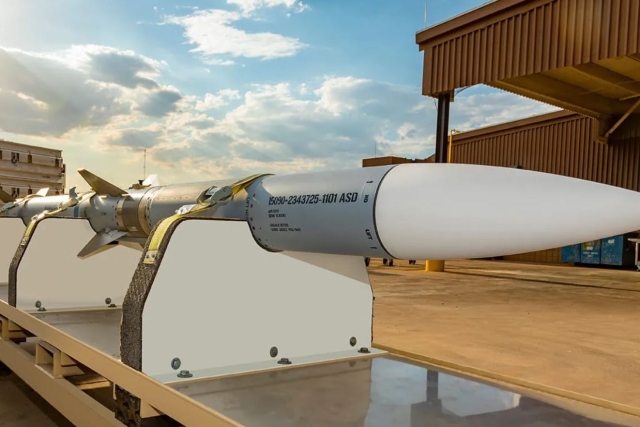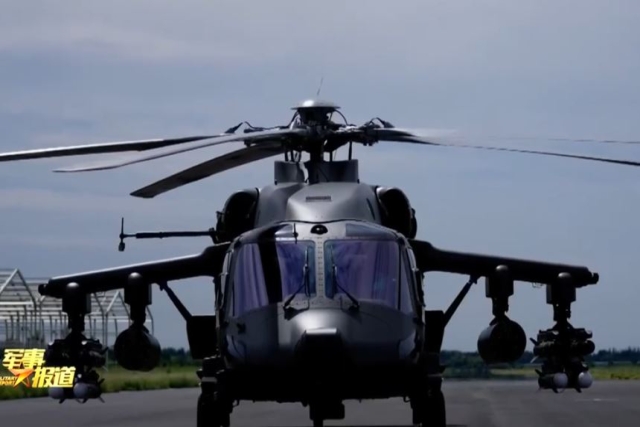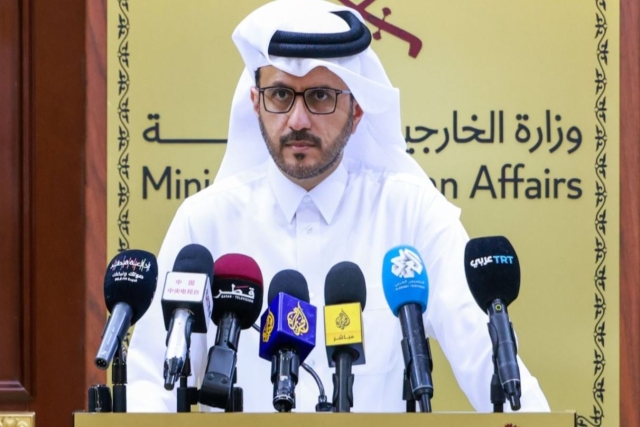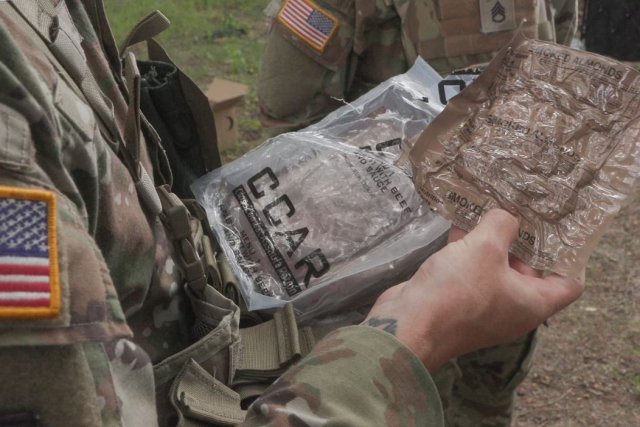Honeywell offers T-Hawk Micro Air Vehicle to India

T-Hawk Micro Air Vehicle
Garrett E. Mikita, President, Defense and Space, Honeywell gave an exclusive interview to our print media partner, Vayu Aerospace.
DW : You are visiting the Indian capital at an important time. The new government has taken over and expected to act forthwith on defense and security.
Garrett E. Mikita: We are very serious about India. The three major advantages that India offers are (i) The intellectual depths of the Indian engineers and scientists, (ii) Affordability in terms of setting up building and equipment, and (iii) Large market with over 1.1 billion people. We believe that India’s economy is still growing and vibrant. It is a good time to be in India given the commonality of vision between the US and India on national security. Let me give you a quick overview of Honeywell Corp. This is an US-based company with $36 billion in annual sales. Aerospace is just one of its four business groups, the other three being Transportation Systems, Specially Materials and Automation & Control Solutions. Honeywell Aerospace is a leading global provider of integrated avionics, propulsion engines, aircraft and engine systems. The business is organized into three strategic business units to serve the needs of aerospace manufactures and customers in three key industry segments: Air Transport & Regional, Business & General Aviation and Defense & Space. Headquartered in Phoenix, Arizona, Honeywell Aerospace has operations at nearly 100 worldwide manufacturing and service sites.
DW : Honeywell Chairman and CEO Dave Cote said in Bangalore recently that “India is an integral part of Honeywell’s growth strategy”, while inaugurating Honeywell’s new facility in Bangalore. Please give an overview of Honeywell in India.
Garrett E. Mikita: With over 10,000 employees, eight percent of Honeywell’s total employees are in India. Spread over five manufacturing locations, we have four of our global technology and engineering centres here. India is also a significant export hub in offshoring, BPO and Engineering services. With key offices in 10 cities, and a sales footprint across 50 cities, the revenue generated is over $500 Million+ (billings $930mn including exports of $360mn+). Honeywell is a primary partner in aviation safety and operational efficiency of most commercial airlines in India. It has a major interest in supporting India’s aviation infrastructure, such as runways and terminals. For example, Honeywell has executed the runway lighting for the new runway at Delhi’s airport. We have a robust security technologies division and has security installations at key government buildings. The Honeywell e-Retail solutions for Indian Oil and Hindustan Petroleum tankers and more than 100 storage terminals. Honeywell also operates India’s most advanced dealer and service network for corporate jets. Honeywell has a strong collaboration with Indian defense establishments. Honeywell avionics, Line Replacement Units (LRUs) and sensors are found in many critical platforms of the IAF. Honeywell is also committed to Hindustan Aeronautics Limited (HAL) programmes such as the Advanced Light Helicopter (ALH) Dhruv, the LCA Tejas and Intermediate Jet Trainer (IJT). Honeywell intends to participate in India’s Light Combat Helicopter (LCH) programme, Medium Combat Aircraft (MCA), TALIN inertial navigation, T-Hawk UCAV and the Mi-17 helicopter upgrade. The F125IN engine is also on offer for the Jaguar re-engining programme. At Honeywell Technology Solutions (HTS) based in Bangalore, there is significant contribution from Indian technologists. HTS, founded in 1994, with centres based in Bangalore, Hyderabad and Madurai, companies one of the largest technology development operations in India.
DW : The F125IN engine is on offer for the IAF Jaguar re-engining programme. Please brief on the status of offer.
Garrett E. Mikita: Honeywell’s F125IN engine, a 9850lbf (43.8kN) thrust engine that will deliver high performance, improved pilot safety, lower maintenance and outstanding reliability, is currently being considered for the Indian Air Force Jaguar re-engining programme. In November 2007 we brought a Jaguar engine to India for testing and let HAL and the IAF run our engine. They called it “flawless” and we did that in three days. No structural changes were necessary for the product. There was 20 to 40 percent more thrust and less fuel consumption than the current Jaguar engine. We have a lot of confidence in our engine and we wanted to prove it in the Indian environment-and we did that. The F125IN is the designation of the F125 engine for the Jaguar application, benefiting from more than 600,000 hours of operational experience on the F125. The non-afterburning version of this engine is the F124 which has a long record of demonstrated success in powering military aircraft, including three highly successful re-engining programmes.
DW : More on the F125IN engine!
Garrett E. Mikita: The F125IN engine will deliver high performance, improved pilot safety, lower maintenance and outstanding reliability. The F125IN powerplant, which is currently being considered for the Indian Air Force Jaguar re-engining programme, is significantly lighter and much more powerful than the aircraft’s current engine. It has an advanced dual full-authority digital engine control (FADEC) system, modular construction, integrated engine health monitoring system and best in class thrust-to-weight ratio – all designed to give the military the best engine with the lowest operating and maintenance costs, The engine is projected to save the IAF more than Rs 7000 crores ($1.5 billion) in life-cycle costs compared to other upgraded options being considered. Superior mission reliability is delivered by the F125’s resistance to bird strikes, low unscheduled engine removal rate and low in-flight abort rate. The F125In modern oncondition engine maintenance design leads to maximum time-on-wing, extending the first off-wing overhaul interval to well over 10 years of service.
DW : The RFP for 57 Advanced Jet Trainers has been issued, including to Alenia Aermacchi for th e advanced jet trainer M-346, with Honeywell contracted to supply the F124-GA-200 engine for the aircraft. Please brief us on the engine.
Garrett E. Mikita: The F124-GA-200 engine provides primary propulsion power for the Alenia Aermacchi M-346 aircraft. In 2008 Honeywell’s International Turbine Engine Company (ITEC) was awarded a contract to deliver F124-GA-200 engines to Alenia Aermacchi for its Advanced Jet Trainer M-346. The F124-GA-200 is a low bypass ratio engine selected in numerous competitions for its ability to meet the most rigorous requirements of modern trainers. It is the latest variant in the F124 family that also includes the F124-GA-100 for the Aero Vodochody/CzAF L-159 and the Boeing/DARPA X-45A UCAV.
DW : Honeywell and HAL have been collaborating to produce the TPE331 engine. Are there plans for export, especially since this family of engines is reported to power “at least 80 aircraft platforms”?
Garrett E. Mikita: Honeywell is the licensor of TPE 331 engines (which powers the HAL-built Dornier 228 aircraft) and radars to HAL. Subsequently Honeywell and HAL signed an agreement in 2008 to have the engine produced in HAL for its global customers. Hindustan Aeronautics Limited (HAL) will be the global manufacturing base for TPE-331 engines, the first aerospace engine to be completely manufactured in India for the worldwide market.
DW : Honeywell will be outfitting “key safety and mechanical systems” for the Indian C-130J Super Hercules programme.” Please tell us about the systems.
Garrett E. Mikita: Honeywell will be producing the military version of its Traffic Collision Alerting System and other key safety and mechanical systems for the IAF C-130J programme. The IAF C-130J will also operate with other Honeywell avionics mechanical and lighting systems and components. Other Honeywell equipment on the aircraft includes the Enhanced Ground Proximity System, Flight Management System, Digital Autopilot, Control Display, Embedded Global Positioning and Inertial Navigation System and Radar Altimeter. Among mechanical systems, Honeywell will be supplying Environmental Control System, Auxiliary Power Unit, Nacelle Power Unit, Cabin Pressure Systems, valves, fuel controls and oil pumps.
DW : India has vigorous Space programme. What are Honeywell’s plans for business with the Indian Space Research Organisation? Have Honeywell systems been used in Indian space programs, say satellite communications and satellite landing systems?
Garrett E. Mikita: We have not participated in Indian satellite programmes as yet. However, we have been involved in the Chandrayaan mission, providing technologies for support programmes, not any technology within. We have been involved with ISRO for a year now. Some teams are working with them. We hope to do more, going forward.
DW : The man-portable T-Hawk Micro Air Vehicle has been offered to the Indian Army. Please brief on this and if Honeywell has provided any other equipment to the Indian army?
Garrett E. Mikita: T-Hawk is Vertical Take-off and Landing (VTOL) Unmanned Aerial vehicle, capable to ‘hover and stare’ with daylight and night cameras, radio relays and datalink. It is very light –only 8kg weight-is-man-portable, can hover at a height of 10,000 ft, detect and recognize man-sized targets. We are talking to potential customers in India. We also have sophisticated inertial navigation and fire control solutions for mechanized forces, such as Main Battle Tanks and AFVs.
DW : The Indian government is expected to move fast on internal security issues such as increased surveillance in urban areas as also coastal security. Honeywell is uniquely positioned in this sector. Please brief us on Honeywell’s plans.
Garrett E. Mikita: Honeywell has extensive capabilities that include security devices such as CCTV, Video Analytics, Bio-metric sensors and complete access control solutions. In addition, Honeywell offers Critical Infrastructure Protection for coastal security consisting of Underwater sensors, Spectra net underwater barriers, Radar for marine security etc. Importantly, our sophisticated security equipment such as Dead Reckoning Module (DRM) enables commando forces to launch precision anti-terror strikes.










